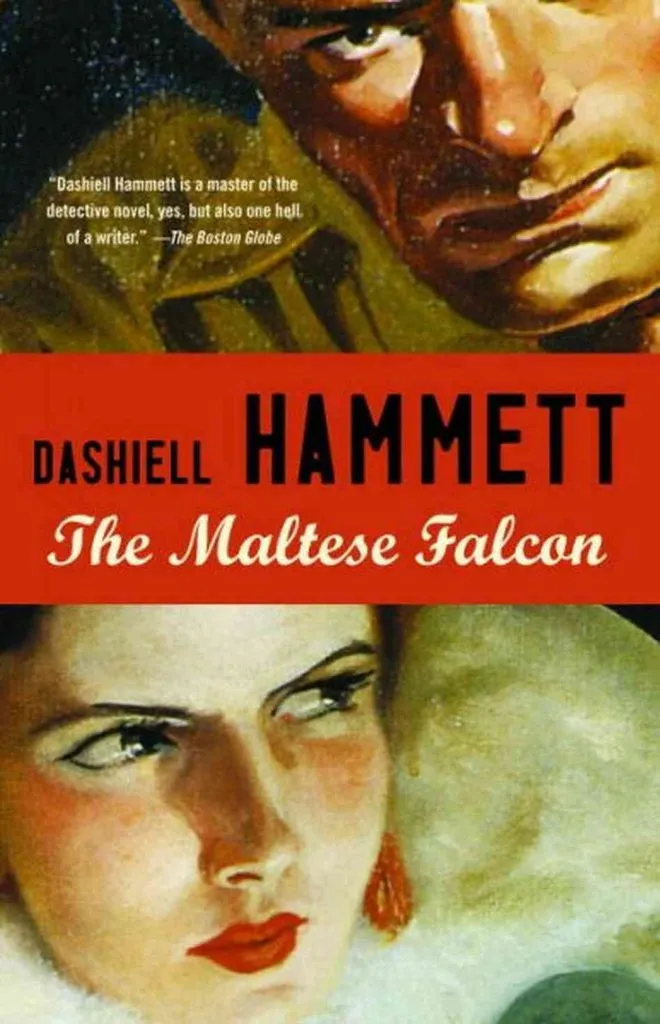
Breaking Into Crime Fiction
- I wanted to read a good selection, but I needed to pack them into one month, so I figured seven was my limit.
- I wanted to sample novels from different decades, in chronological order. Unfortunately, I wound up skipping the ’60s, ’80s, and 2010s (gosh that feels so weird to write!).
- I wanted a good selection of novels written by both women and men.


I started with The Maltese Falcon (1930) and The Big Sleep (1939), two of the earliest and most definitive novels of the crime/noir genre. Both feature a lone, male Private Investigator with a gritty personality and jaded outlook on life. Both involve a “wild-and-crazy” femme fatale who is ultimately reined in cause she’s so very naughty, flitting around over town stirring up trouble (I’m trying so very hard to not let my snark overtake my tone here, but it’s hard, you guys). What made The Big Sleep stand out, though, was the first-person narrator, and the relaxed humor in evidence on the very first page. The Maltese Falcon, however, was deadly serious (except for a few sarcastic quips by P.I. Sam Spade). The Big Sleep had a jaunty feel, like in my favorite cartoons starring Pepe Le Pew, where wherever the lady cat runs, Pepe finds her, even if she’s running like crazy and he’s just prancing along, blowing kisses through the air. You get the sense that everyone could scatter like frightened cats when Marlowe steps onto the scene, but he’ll eventually get his man/woman. Which he does. Of course.




With these two books, I kept thinking about The Sopranos– I just couldn’t help it. (There are many things from that show that I just wish I could un-see, but alas). Higgins and Leonard drop us unceremoniously into the world of organized crime, where informants are everywhere and massive loads of cash are ripe for the taking. As in The Maltese Falcon and The Big Sleep, guns are everywhere, waved around in almost every scene to inspire fear and make the unlucky dudes on the wrong side of them cough up the dough (as they say). While The Friends of Eddie Coyle is a fast-moving, dialogue-heavy Tarantino-esque dip into the world of double-crossing gun-runners and bank robbers, Get Shorty is a novel that morphs at times into a film script and tells the story of a man turning his own life into a film script. Very meta, very funny, and very very smart.
I suppose it’s only right that The Cuckoo’s Calling gets to stand on its own. After all, it was written under a pseudonym (Galbraith is actually J. K. Rowling), it is the first in a projected series of crime novels starring private detective Cormoran Strike, and it is very much like a jigsaw puzzle composed of innumerable pieces drawn from classic noir and popular culture. And finally, it is the only British novel of the bunch. I have to admit that I was a bit disappointed by The Cuckoo’s Calling, because it lacked the (for a better word) fire that made novels like Mr. Ripley and The Big Sleep crackle under my fingers. The detective was what you would think a detective in a classic crime novel should be- but that predictability worked against this novel. And yet, its chronicling of the disastrous results of familial favoritism and too much wealth lying around is believable. Strike is closest to Philip Marlowe in his thorough detective work and steely nerves, but without the humor (Strike, though, has to deal with a painful prosthesis and a disastrous break-up, so humor isn’t exactly expected). I’m looking forward to the next installment, The Silkworm, due out in a few months. Hopefully that novel will have more fire in its belly.
So there you have it, my lovely readers. It’s been a wild and fun ride this past month, and I hope you’ll fill the comments section with more crime fiction recommendations for my future reading! I think I shall devote my next “genre month” to space opera…or historical fiction…or fantasy…not sure just yet.












